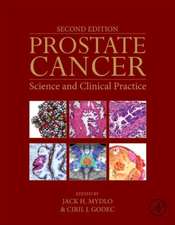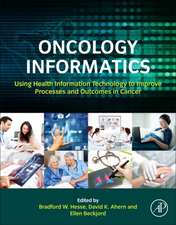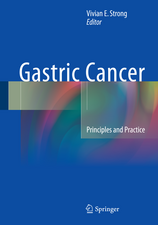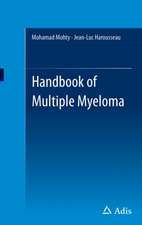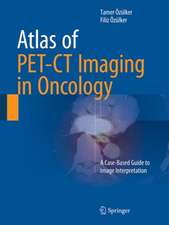Mouse Models of Human Blood Cancers: Basic Research and Pre-clinical Applications
Editat de Shaoguang Lien Limba Engleză Hardback – 18 aug 2008
| Toate formatele și edițiile | Preț | Express |
|---|---|---|
| Paperback (1) | 1095.54 lei 43-57 zile | |
| Springer – 18 sep 2014 | 1095.54 lei 43-57 zile | |
| Hardback (1) | 993.41 lei 38-44 zile | |
| Springer – 18 aug 2008 | 993.41 lei 38-44 zile |
Preț: 993.41 lei
Preț vechi: 1045.68 lei
-5% Nou
Puncte Express: 1490
Preț estimativ în valută:
190.08€ • 198.100$ • 157.29£
190.08€ • 198.100$ • 157.29£
Carte tipărită la comandă
Livrare economică 02-08 aprilie
Preluare comenzi: 021 569.72.76
Specificații
ISBN-13: 9780387691305
ISBN-10: 0387691308
Pagini: 293
Ilustrații: X, 293 p.
Dimensiuni: 155 x 235 x 20 mm
Greutate: 0.59 kg
Ediția:2008
Editura: Springer
Colecția Springer
Locul publicării:New York, NY, United States
ISBN-10: 0387691308
Pagini: 293
Ilustrații: X, 293 p.
Dimensiuni: 155 x 235 x 20 mm
Greutate: 0.59 kg
Ediția:2008
Editura: Springer
Colecția Springer
Locul publicării:New York, NY, United States
Public țintă
Professional/practitionerDescriere
In this book, Dr. Li and his author team plan to emphasize why mouse models are useful in vivo systems for understanding disease mechanisms and developing therapeutic strategies in blood cancers. The authors do not intend to cover all types of blood cancers; instead, they will focus on some major ones such as leukemias and lymphomas. However, the authors will try to cover as much as they can the cancer types and point out that many blood cancers need to be studied in mouse disease models although they are still not available at present. A major focus in the book will be to show what we can or cannot learn from mouse disease models and to also show the critical contributions of mouse models in therapeutic drug development.
Cuprins
Chapter 1 Mouse models of myeloproliferative disease associated with mutant JAK2 tyrosine kinase: insights into pathophysiology and therapy Richard A. Van Etten Chapter 2 Genetic modeling of human blood cancers in mice Yiguo Hu and Shaoguang Li Chapter 3 Murine Models of Hematopoietic Disease: Pathologic Analysis and Characterization Benjamin H Lee and Jeffery L. Kutok Chapter 4 Mechanisms of DNA double strand break repair in hematopoietic homeostasis and oncogenesis Sarah A. Maas, Lura Brianna Caddle, and Kevin D. Mills Chapter 5 Modeling human leukemia using immune-compromised mice F Ishikawa, Y Saito, and LD Shultz Chapter 6 Dietary Restriction: A model system probing the cell fate decision between cancer and senescence Robin P. Ertl and David E. Harrison Chapter 7 Modeling human Philadelphia chromosome-positive leukemia in mice Shaoguang Li Chapter 8 Mouse Models of Human Mature B Cell and Plasma Cell Neoplasms Siegfried Janz, Herbert C. Morse III, and Michael A. Teitell Chapter 9 Genetic and Virological Predisposition to Pre-B Lymphomagenesis in SL/Kh Hiroshi Hiai Chapter 10 Animal cancer models in anticancer drug discovery and development Francis Lee and Roberto Weinmann Bristol-Myers Squibb Oncology, Princeton, New Jersey, USA Chapter 11 DGL Global Strategies in DNA Microarray Gene Expression Analysis and Data Mining forHuman Blood Cancers Dongguang Li
Textul de pe ultima copertă
Although it remains an open question among some people whether mice and humans are similar in disease development, the laboratory mouse has emerged as the preeminent animal model for human diseases. This is underscored by the recently completed mouse and human genome projects, which have revealed that mice and humans share the vast majority of their genes, and thus get many of the same diseases, and for the same reasons. Emphasizing why mouse models are valuable in vivo systems for understanding disease mechanisms and developing therapeutic strategies for human blood cancers, "Mouse Models of Human Blood Cancers: Basic Research and Pre-clinical Applications," edited by Shaoguang Li, aims on presenting thorough analyses of the pathological features and the molecular bases of several major types of blood cancer and to describe translational research using mouse cancer models.
Caracteristici
Most importantly, this book will be very highly respected because it is coming out of The Jackson Laboratory, which is the largest and most famous mouse genetics institution in the world
The editor has invited several experts at The Jackson Laboratory and they’ve agreed to author chapters
Includes supplementary material: sn.pub/extras
The editor has invited several experts at The Jackson Laboratory and they’ve agreed to author chapters
Includes supplementary material: sn.pub/extras

